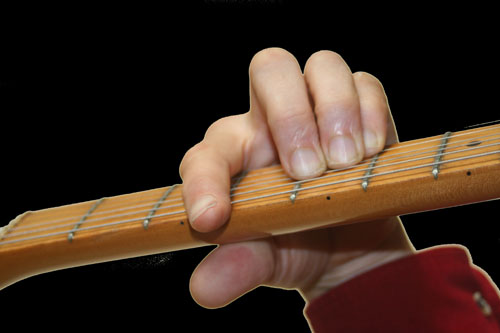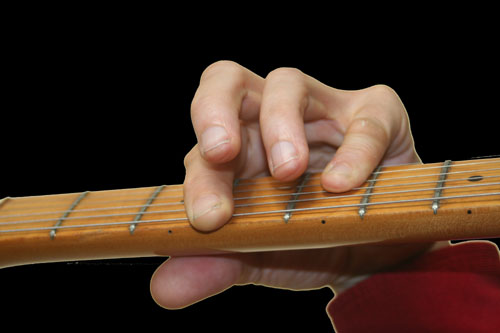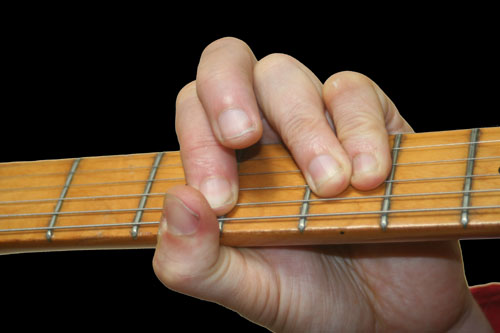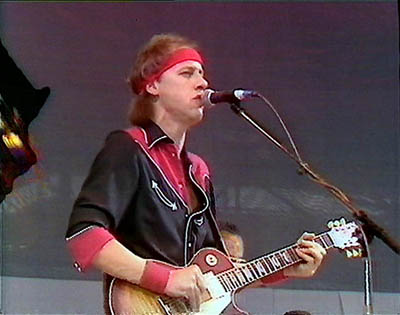What do you think is the most important chord for the average guitar player? Well, presumably it is a rather simple, basic chord that is played often in all kind of tunes. So probably a ‘normal’ major chord, something like C or D.
Even a beginner quickly learns that there are many ways to play even something simple as a C chord. The first version you learn is probably the one that uses open strings, see the picture.

While this one is a favourite of all folk players, the most important version for rock is possibly the chord played at the 3rd fret position. In chord books you will find something like this:

This chord is normally played as barre chord which looks like one of these:


You will soon discover that for the Mark Knopfler playing style where you often switch from chords to fills or to a solo, the barre chords pictured above do not work very well because you have to move your left wrist quite a lot This is because when playing lead Knopfler holds the neck “just like a plumber holds a hammer” (quote Mark Knopfler) while a classical guitar player holds the neck with the thumb at the backside of the neck /see pictures above), so the wrist is at a different position, much lower so that barre chords become easy.
The way to play a C chord in a “plumber’s way” would look like this as a diagram:

or like this on a photo:

The index finger frets the a string, the pinky the d,g, and b strings, middle and ring finger do nothing, or (as in this picture) the ring finger might help to keep the strings down so that less force is required for the pinky. Compare it e.g. with the following picture showing Knopfler playing this C chord in ‘Money for Nothing’ (from the Live Aid concert, 1985):

And why do you think a plumber holds a hammer the way he does? The answer is obvious: because he has to work with it and this is the way it works best. The same is true for the guitar: hold the neck like a plumber, this is the natural way to do it, forget about the snobbish attitude and about guitar teachers who still think barre chords are what makes “good technique”.

6 thoughts on “A plumber’s C chord”
Consider adding the thumb on the 6th string (3rd fret for the C chord). Mk uses this technique quite a lot for power chords too.
Just to add, if Knopfler wants to bring in the 5th note on the 5th string he uses that long middle (or second finger) to play the note without changing much else (see making movies on the 1980 BBC Arena doc for an example) – big hands help here.
Alessandro, you are right with that 5 on the low e-string, I was thinking about adding this but left it out since the article is intended for beginners as well. Mark likes this but I think does not play it normally this way, only for a special effect.
Dermot, you mean the 5th note on the 6th string, or what, don`t get it completely I am afraid
I too am a “plumber” when it comes to holding the guitar (I even use my thumb to bar the E and A strings at times), but I’d dispute that its a snobbish attitude that dictates putting your thumb behind the neck – it allows greater finger span and is absolutely necessary for some pieces. When I need to stretch for these, I whip the thumb behind – otherwise my tendons would pop!!!
Great blog btw.
Thanks for your comment. You are right of course, barre chords and the classical way with the thumb behind the neck make a lot of sense for some stuff. What I wanted to say is however that the “plumber’s way” is not inferior but makes a lot of sense for other styles.
good site jytmwk